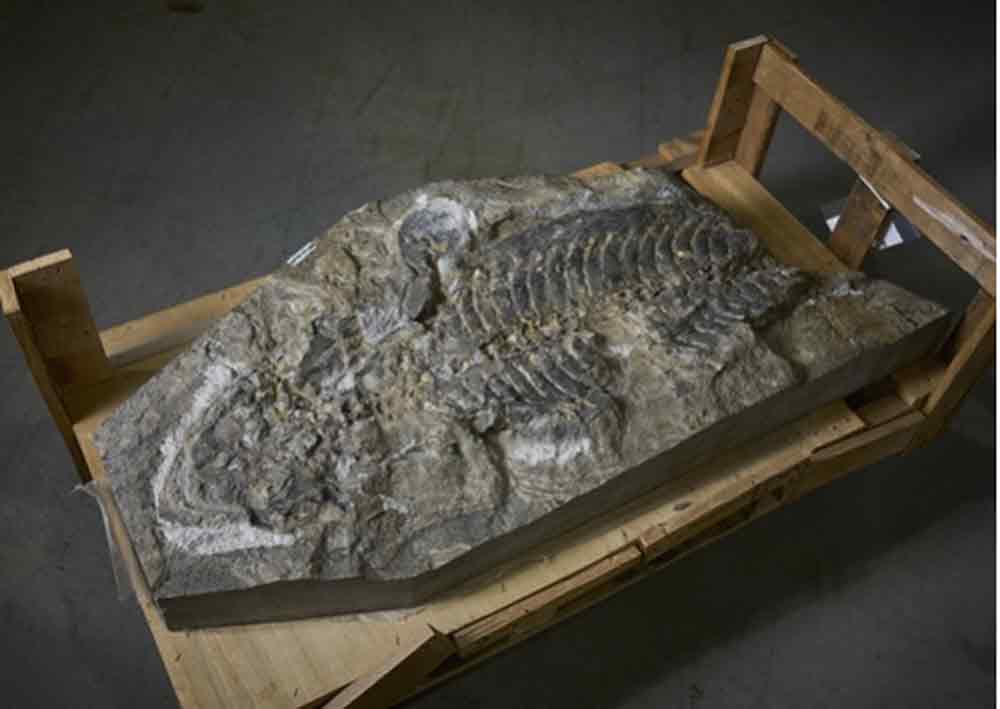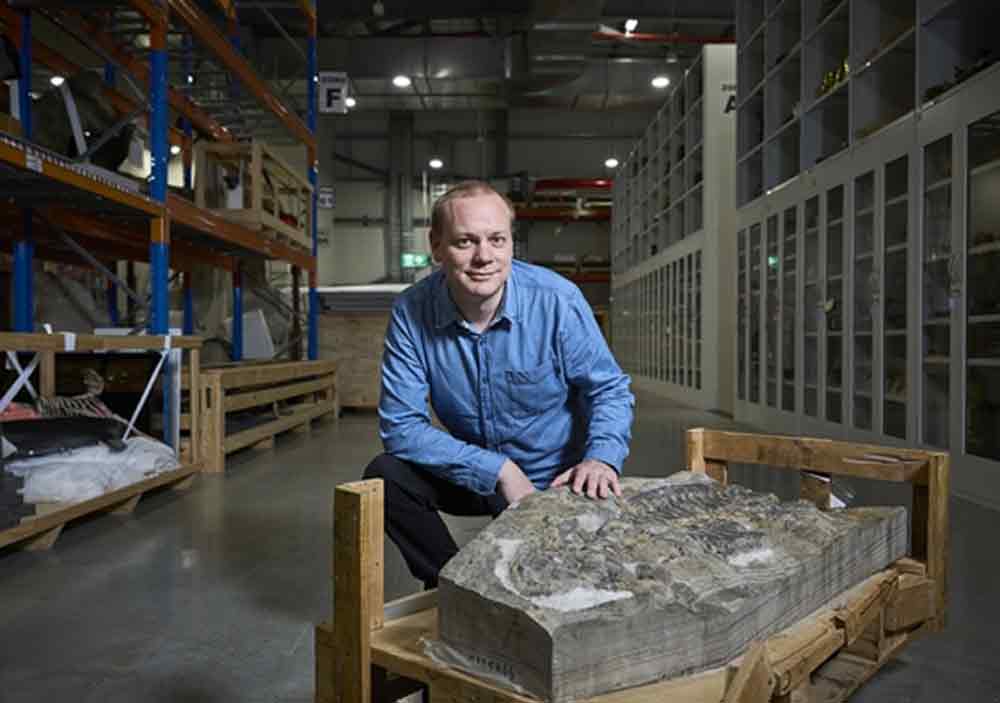The amphibian is believed to have inhabited freshwater rivers in the Sydney Basin 240 million years ago during the Triassic period.
Researchers have formally described a 240 million-year-old amphibian fossil that was found in a retaining wall in the 1990s as Arenaerpeton supinatus, a new species whose name means supine sand creeper. What is remarkable about the fossil is that it retains the almost complete skeleton as well as the outlines of the amphibian’s skin.

An artist’s impression of Arenaerpeton supinatus, the ancestor of today’s Chinese Giant Salamander. Image: Jose Vitor Silva
“This fossil is a unique example of a group of extinct animals known as temnospondyls, which lived before and during the time of the dinosaurs,” Palaeontologist Lachlan Hart, a Ph.D candidate at University of North South Wales Sydney’s School of Biological, Earth and Environmental Sciences (BEES) said in a press release put out by the university. “We don’t often find skeletons with the head and body still attached, and the soft tissue preservation is an even rarer occurrence.”
Giant Chinese Salamander, Now Viewed As 5 Species Level Lineages, Faces Extinction
Chinese Giant Salamander Mucus More Effective At Sealing Wounds Than Many Medical Glues
The amphibian is believed to have inhabited freshwater rivers in the Sydney Basin 240 million years ago during the Triassic period. Hart said Arenaerpeton most likely hunted ancient fish such as Cleithrolepis. Not much is known about the waters it inhabited, nor the creatures it coexisted with. Hart says Arenaerpeton most resembles the modern Chinese giant salamander (Andrias davidianus) and has a similar head shape to Andrias davidianus.

Arenaerpeton looks a lot like the modern Chinese Giant Salamander. Photo: UNSW Sydney/Richard Freeman
“Superficially, Arenaerpeton looks a lot like the modern Chinese giant salamander, especially in the shape of its head,” Hart said. “However, from the size of the ribs and the soft tissue outline preserved on the fossil we can see that it was considerably more heavyset than its living descendants. It also had some pretty gnarly teeth, including a pair of fang-like tusks on the roof of its mouth.” Hart noted Arenaerpeton is an exciting find in that it is large, about 1.2 meters in length, while other closely related animals that occurred during the Triassic period were much smaller.
“The last of the temnospondyls were in Australia 120 million years after Arenaerpeton, and some grew to massive sizes,” Hart said. The fossil record of temnospondyls spans across two mass extinction events, so perhaps this evolution of increased size aided in their longevity.”
Said co-author Dr. Matthew McCurry, senior lecturer at the UNSW’s School of BEES and curator of Palaeontology at the Australian Museum; “This is one of the most important fossils found in New South Wales in the past 30 years, so it is exciting to formally describe it. It represents a key part of Australia’s fossil heritage.”
The complete paper, “A new Chgutisaurid (Brachyopoidea, Temnospondyli) with soft tissue preservation from the Triassic Sydney Basin, New South Wales, Australia” can be read on the Journal of Vertebrate Paleontology website.



